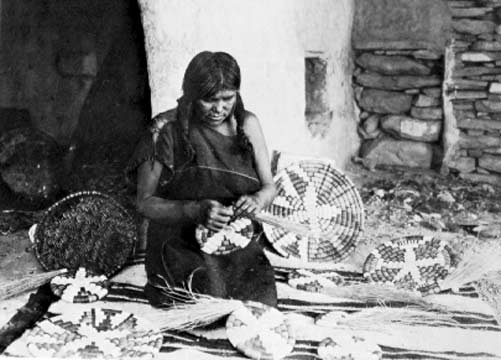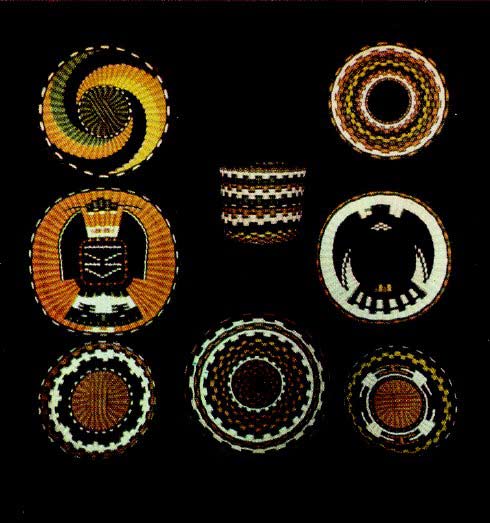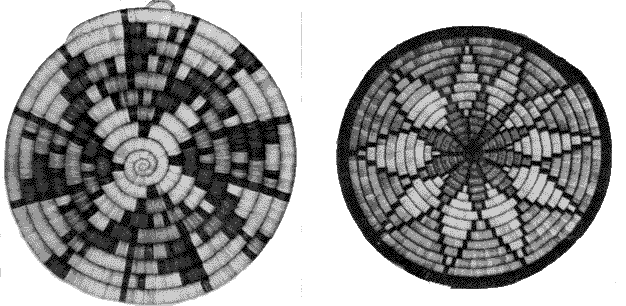

Hopi Woman Making Plaques at Shungopovi
Photograph by A.C. Vroman, 1901
Courtesy of the Southwest Museum, Los Angeles
The Hopi weaver above is making a coiled style of basket noted for the massive appearance of the bundle foundation, typical of baskets from Second Mesa. Other Hopi baskets use wicker weaving techniques. Bright primary colors covering broad areas make up the decoration. The quality of this style, resulting from the size of the coil foundation and the use of large areas of color sets it apart from others. Designs, often done in bold bright colors, are either geometric or depictions of ceremonial Kachina figures.

Photo by J. H. McGibbeny (From Tanner 1968)
The continuity of Hopi basket-weaving technique is readily apparent in the comparison below. The older basket is from the turn of the century, while the newer one were made some 50 years later. The most significent difference in the baskets is the application of Western technology to improve the coiling, painting and execution, but not the design.

The old and the new in Hopi baskets. The old style (left) used very large coils; they measure almost one inch in diameter in this piece. They are much smaller in the piece on the right. Designs tend to be diffuse in the older pieces; they are much more ordered and concise in later work. Earlier patterns were generalized, now they are definitive. Colors were aniline red and green, now they are natural dyes and often vary in range. (From Tanner 1968)
Frank Provo -- mosaic@innocent.com